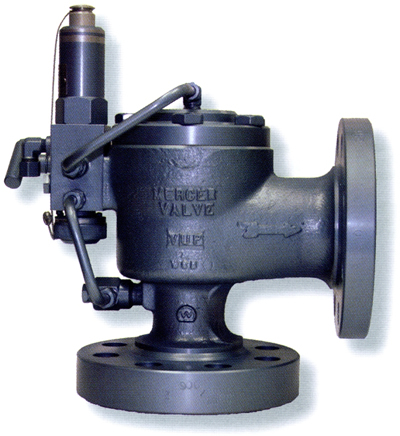TOPIC:"High Performance" Safety Relief ValvesMERCER VALVE
|
||||
|
Auto Seat Technology® is patented soft
seat relief valve design that increases seat life,
reduces repairs, and gives the valve a consistent set pressure. |
||||
| AUTO SEAT TECHNOLOGY® |
Direct
Spring Operated
|
|||
|
||||
| |
||
|
Pilot
Operated
|
|
|
Pop / Snap Acting or Modulating - Pilot Operated Safety Relief Valve |
||
|
Snap
Acting: At set pressure the valve snaps to full
lift. The system pressure will relieve until the pre-set
blowdown is achieved. Blowdown is the difference between set
pressure and reseat pressure. Nominal blowdown is 7 to 8% so
the valve will reseat 7 to 8% below set pressure.
|
||
|
Modulating: At set pressure the valve gradually begins to open as needed in response to the system overpressure. When the system pressure has been relieved the modulating valve will reseat very close to set pressure. This is very different from the snap action valve which abruptly "snaps" open, then closed. Modulating valves produce far less shock on the system and there is considerably less wear and tear on the main valve components. Another key reason for using a modulating valve is the economic savings due to minimized product loss because the valve reseats near set pressure, rather than 7 to 8% below set pressure. |
||
Mercer Valve Co., Inc.
Safety Relief Valve Catalogs
| Description |


